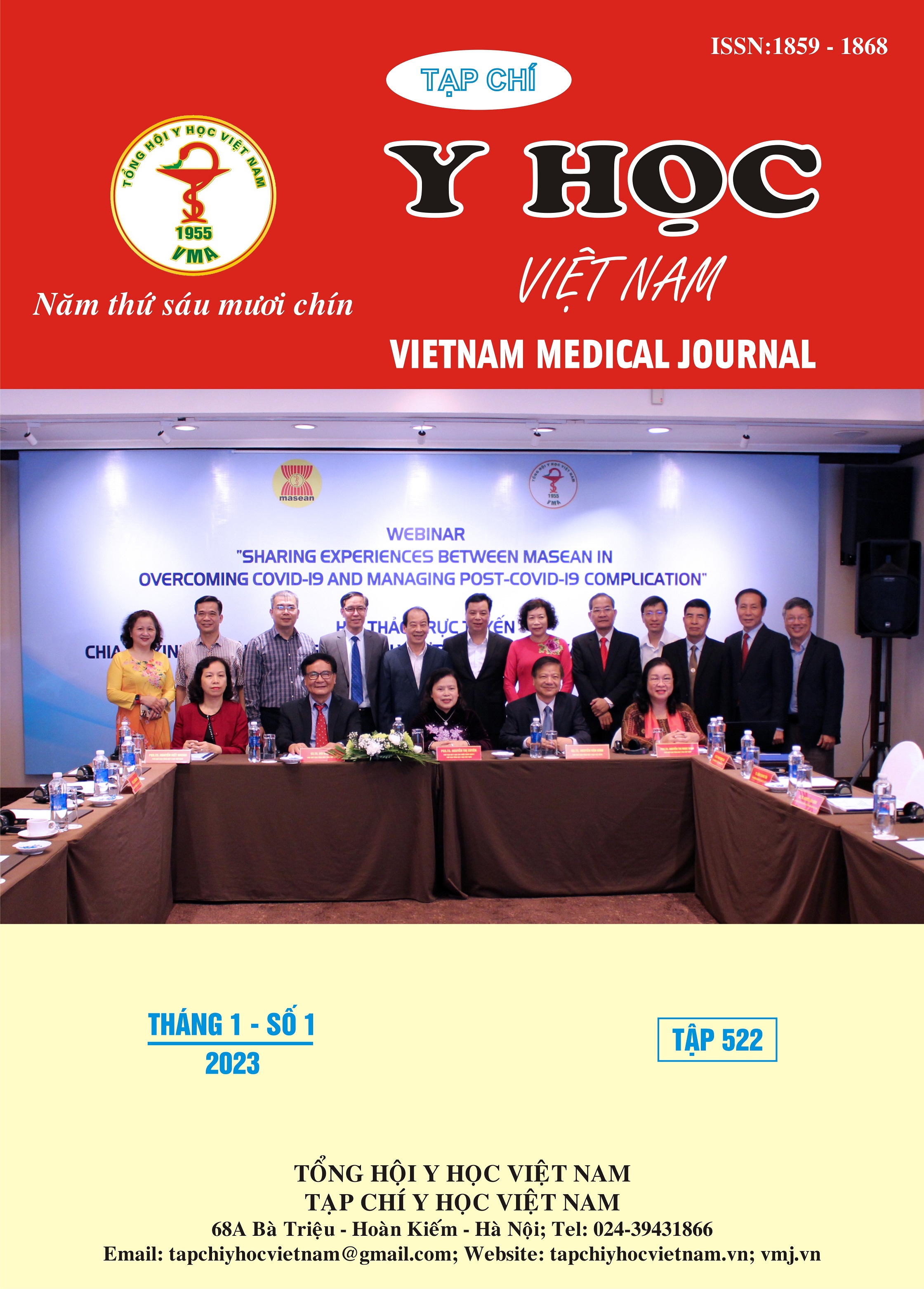IMPLEMENTATION RESULTS OF TACROLIMUS THERAPEUTIC DRUG MONITORING IN ADULT PATIENTS AFTER LIVER TRANSPLANTATION IN VIET DUC HOSPITAL
Main Article Content
Abstract
This study described the results of tacrolimus therapeutic drug monitoring (TDM) on liver transplantation patients to manage the graft-versus-host disease and the drug toxicity. In addition, factors associated with tacrolimus trough concentration (C0) were identified. The data of a cohort of 57 adult patients who underwent liver transplantation from 2017 to 2021 were retrospectively collected in Viet Duc Hospital. Tacrolimus trough concentrations post-liver transplantations showed a less variation and a downward trend at the later phase of follow up. The observed C0 attained recommended therapeutic range of Immunosuppressive Drugs Scientific Committee of the International Association of Therapeutic Drug Monitoring and Clinical Toxicity (IATDMCT) in 2019 were about 40%. The intra-patient variability (IPV) of tacrolimus estimated by calculating the coefficient of variation (CV) of whole blood C0 were from 3.5% to 105.4%. Through mixed-linear regression analysis, the factors associated significantly with C0 included maintenance dose (β coefficient = 1.894; p < 0.001), hematocrit (β coefficient = 1.053; p = 0.009) and maintenance dose (β coefficient = 3,930; p < 0.001), serum urea (β coefficient = 0,453; p < 0,001), respectively. In conclusion, tacrolimus C0 and IPV showed significant variability in both early and late phases after transplantation, suggesting that the implementation of TDM with considering influenced factors was warrant.
Article Details
References
2. Cai X., Li R., et al. (2020), "Systematic external evaluation of published population pharmacokinetic models for tacrolimus in adult liver transplant recipients", Eur J Pharm Sci, 145, pp. 105237.
3. De Gregori S., De Silvestri A., et al. (2022), "Therapeutic Drug Monitoring of Tacrolimus-Personalized Therapy in Heart Transplantation: New Strategies and Preliminary Results in Endomyocardial Biopsies", Pharmaceutics, 14(6), pp.
4. Dopazo C., Bilbao I., et al. (2022), "High intrapatient variability of tacrolimus exposure associated with poorer outcomes in liver transplantation", Clin Transl Sci, 15(6), pp. 1544-1555.
5. Hermida J., Fernandez M. C., et al. (2005), "Clinical significance of hematocrit interference in the tacrolimus II microparticle enzyme immunoassay: a tentative approach", Clin Lab, 51(1-2), pp. 43-5.
6. Limsrichamrern S., Chanapul C., et al. (2016), "Correlation of Hematocrit and Tacrolimus Level in Liver Transplant Recipients", Transplant Proc, 48(4), pp. 1176-8.
7. Moini M., Schilsky M. L., et al. (2015), "Review on immunosuppression in liver transplantation", World J Hepatol, 7(10), pp. 1355-68.
8. Nguyen T. K., Trinh H. S., et al. (2021), "Technical characteristics and quality of grafts in liver procurement from brain-dead donors: A single-center study in Vietnamese population", Ann Med Surg (Lond), 69, pp. 102654.
9. Wallemacq P., Armstrong V. W., et al. (2009), "Opportunities to optimize tacrolimus therapy in solid organ transplantation: report of the European consensus conference", Ther Drug Monit, 31(2), pp. 139-52.
10. Zhu L., Yang J., et al. (2015), "Effects of CYP3A5 genotypes, ABCB1 C3435T and G2677T/A polymorphism on pharmacokinetics of Tacrolimus in Chinese adult liver transplant patients", Xenobiotica, 45(9), pp. 840-6.


